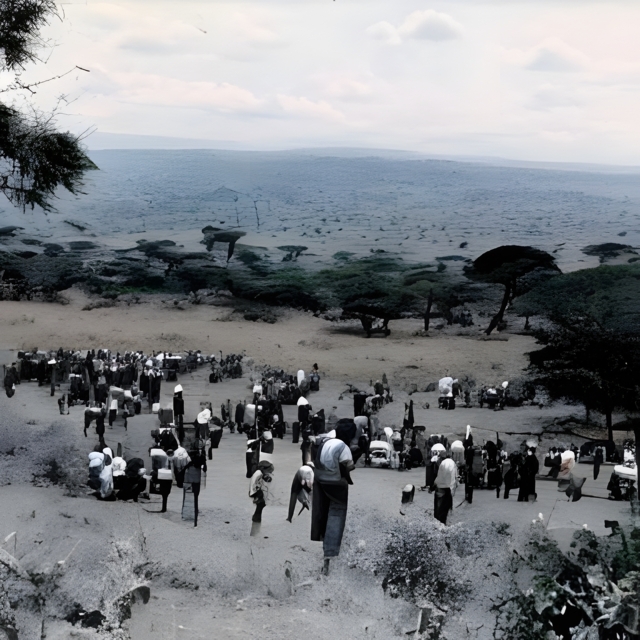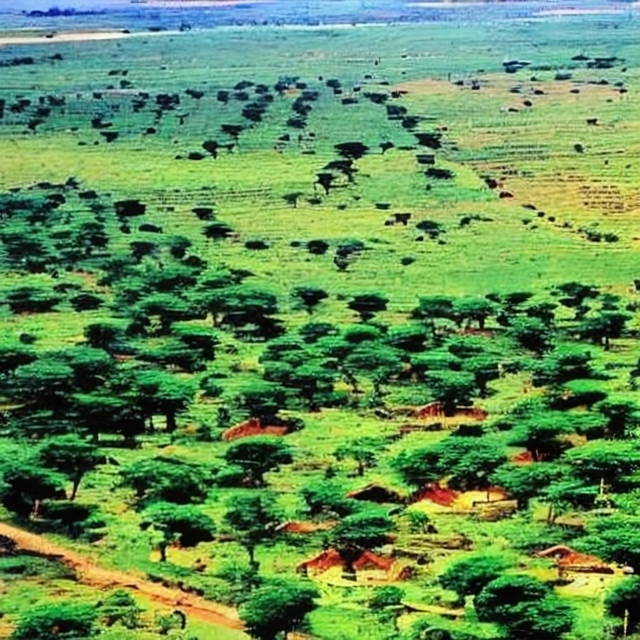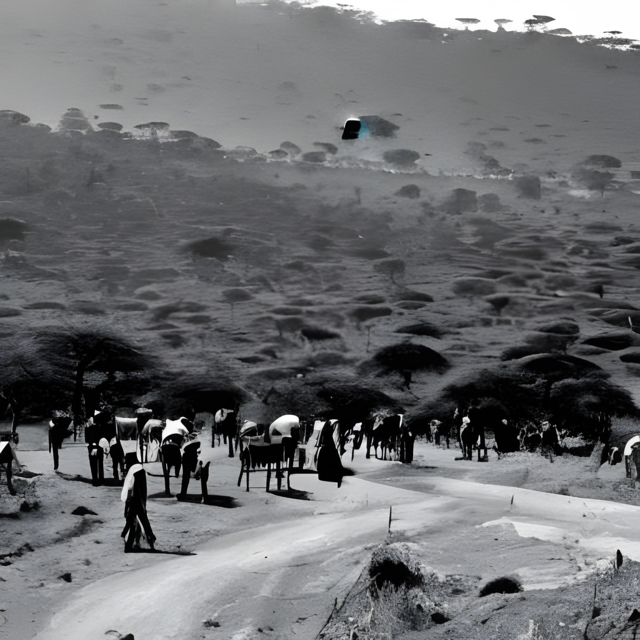Kenya’s Animal Plague.
The year 1977 saw an unexpected outbreak of the Rift Valley Fever (RVF) that affected many parts of Kenya. This disease had a significant impact on communities that relied on farming for subsistence. Here’s a deeper dive into the events surrounding the Rift Valley Fever outbreak of 1977 in Kenya:
Beginning
In the early days of 1977, Kenyans noticed unusual occurrences among domestic animals like cows, goats, and sheep. They developed high fevers accompanied by loss of appetite and weakness that led to death within days. The local community members reported these observations to veterinary officers who initiated investigations after realizing the severity of the situation. After rigorous analysis in laboratories, the culprit behind the widespread animal illness emerged—the Rift Valley Fever virus.
Transmission
The Rift Valley Fever virus, which causes haemorrhagic fever among other symptoms in humans, originates from mosquito bites. These insects actively transmit infected blood from diseased animals to healthy ones, leading to further propagation of the illness. Unfortunately, several species of mosquitoes that transmitted the virus were abundant throughout Kenya, making control efforts more complicated.
The Spread
As days went by, cases of the Rift Valley Fever grew exponentially with overwhelming numbers recorded in Nakuru District. With the increasing number of sick animals, Kenyan authorities sought assistance from foreign countries including France, Germany, United Kingdom, and United States, among others. This collaboration aimed at addressing the threat effectively through shared knowledge and resources. The outbreak extended to neighboring Tanzania, Uganda, and Somalia, resulting in losses surpassing 100,000 infected sheep. However, thanks to timely intervention and improved diagnostic methods during later outbreaks; livestock casualties decreased significantly.
The Impact
Human population experienced consequences similar to those affecting the animals they kept, even though fatalities remained low. Farmers faced food shortages as a result, making life difficult for all affected families.
Desperate Measures
To mitigate the spread and economic damage, the government established a National Control Campaign Task Force responsible for coordinating efforts across departments. The team employed strategies such as aerial spraying and distribution of pesticide for use on water surfaces where breeding sites for adult mosquitoes existed.
Vaccination campaigns targeting animals provided relief for concerned citizens and stakeholders. Research scientists focused their attention toward developing vaccines effective against various strains of the virus for both human and animal populations. Efforts resulted in successful development of candidate vaccines, which underwent trials in laboratory settings before wider adoption. Despite advancements made, uncertainties regarding the potency and effectiveness of vaccines remained a matter of concern, necessitating continued studies.
Lessons Learned from the 1977 Experience
Kenya took crucial lessons from her encounter with Rift Valley Fever as a country exposed to viral threats capable of negatively impacting agriculture, commerce, and public health. Since then, concerted action has been taken towards surveillance systems establishment, ensuring prompt notification of outbreak occurrence for immediate response implementation. Improvement of diagnostics technology has enhanced recognition of new cases, facilitating the rollout of appropriate measures. Furthermore, engagement of traditional healers to disseminate critical information on risk reduction contributed to building resilience within rural areas prone to future attacks by zoonotic diseases caused by vectors or pathogens.
Conclusion
The 1977 Rift Valley Fever Outbreak tested Kenya’s resolve to protect public and animal health amidst global support from international organizations. Timely interventions, innovative approaches, and collaborations proved integral to managing the crisis successfully.
The Rift Valley Fever Outbreak of 1977 was a turning point in Kenya’s approach to controlling and preventing zoonotic diseases transmitted via vectors. The government, together with international partners, invested heavily in strengthening capacities for monitoring, detecting, and responding to outbreaks. This laid the foundation for Kenya to take charge of its own health security, ultimately contributing to the protection of national economies, social well-being, and individual lives.
While much progress has been achieved since this initial experience, Africa still faces daunting challenges related to arthropod-borne diseases threatening human and animal populations. Climate change is now believed to play a role in shifting ranges and seasonality of vector distributions, posing increased risks to people and their livelihood sources. Moreover, poor socioeconomic conditions, political instability, environmental degradation, urbanization pressures, and lack of education aggravate the potential harm posed by disease transmission processes. Thus, it is vital that Africans remain vigilant, prioritize investment in sustainable disease surveillance infrastructure tailored for unique circumstances encountered across different geographical regions, and capitalize on recent technological developments to enhance preparedness to counter threats posed by arboviral infections and other dangerous microbes. Learning from previous experiences – both success stories and missed opportunities – will help generate novel adaptive responses needed to foster better integration between ecosystem stewardship, economic growth, and human flourishing on the African continent. By doing so, we can honour past struggles confronting these health challenges while empowering current generations to shape equitable futures founded upon resilience to recurring crises.
References
– Gachohi JM & Marsh DR. (2005). “Pastoral Livelihoods at Risk: Understanding the Response of Pastoral Communities to Rift Valley Fever in Northeastern Kenya.” Human Dimensions of Wildlife, 10(1), pp 31-46.
– Institute for Security Studies (ISS) (2012). “Assessing Responses to African Armed Nonstate Actors”. ISS Paper No 243, March 2012, available at: <https://issafrica.org/publications/iss-pub…>
– Kasanga RJ, Kariuki DT, Onyango AD et al. (2013). “Rift Valley fever in Kenya, 2006/2007: An unprecedented event?” Infectious Disasters and Health Crises, Volume One, ed Hii Y., pp. 226–237. DOI: https://doi.org/10.1007/978-94-007-7585-7_15
Tags
Divi Meetup 2019, San Francisco
Related Articles
Unappreciated Greatness
Life and Legacy of Jahangir of the Mughal Empire. Jahangir ruled over one of the largest empires in human history during his lifetime, yet few people outside of South Asia have heard of him. I aim to shed light on the life and legacy of this remarkable figure,...
The Plague Doctor’s Diary
A Personal Account of the Turin Epidemic of 1656. I am writing this diary to record my experiences and observations as a plague doctor in Turin, the capital of the Duchy of Savoy, during the terrible epidemic that has afflicted this city and its surroundings since the...
The Timeless Beauty of Bustan
Unveiling the Secrets of Saadi Shirazi's Masterpiece.In the realm of Persian literature, few works have captured the essence of love, spirituality, and morality quite like Bustan (The Orchard) by Saadi Shirazi. This 13th-century masterpiece has left a lasting impact...
Stay Up to Date With The Latest News & Updates
Explore
Browse your topics of interest using our keyword list.
Join Our Newsletter
Sign-up to get an overview of our recent articles handpicked by our editors.
Follow Us
Follow our social media accounts to get instant notifications about our newly published articles.










